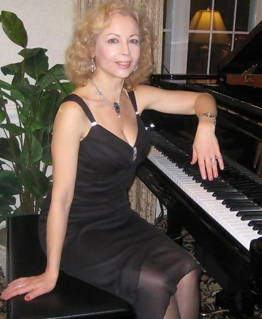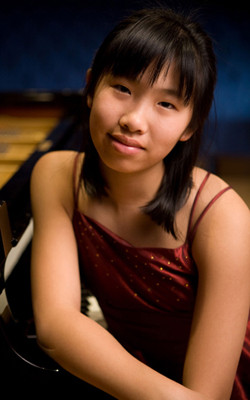Franz Liszt needs few plugs to keep his name alive. Arguably the most comprehensive virtuoso performer, composer, charismatic stage personality, career strategist, and altruistic pedagogue to have shared our planet, Liszt the pianist represents the historical development of our genre, and a bit of him persists in the daily keyboard regimen of each of us whether we like to pay tribute to him or not. Tribute is paid, however, with full-scale explanation of the artist’s pedagogical pedigree for those willing to read the fine print, by the Ukrainian pianist Sophia Agranovich in her 2011 Liszt bicentennial CD, self-released on the Armonioso label. (There is no identifying number on the cover or spine.)
The CD’s packaging states: “Recorded on Franz Liszt’s birthday, this dedication to his Bicentennial features his most profound and virtuosic compositions.” Ms. Agranovich chooses conservatively from the plethora of possible recitals, opting for the tried-and-true “Un Sospiro” and B-Minor Sonata, with additional vorspeisen including the “Rhapsodie Espagnole” and piano transcription of Paganini’s violin caprice “La Campanella.” The latter is heard not in Liszt’s most virtuosic edition but in Busoni’s re-transcription.
Requisite athleticism notwithstanding, Ms. Agranovich displays finesse in the recurrent, introspective sighs of high treble filigree and chromatic runs throughout her program (she might have considered “Un Sospiro” a befitting title for the release). Coy pacing in the “Follia” variations of the “Spanish Rhapsody” and crisp articulation in the Sonata add supportive touches to her ardent portrayal of the sentimental-irascible “soul divided against itself.” To be sure, Ms. Agranovich possesses capable hands, facility, and authentic schooling, as documented, and her affinity for double notes and octaves takes us through landscapes of occasionally cautious, sometimes all-out exciting, and predominantly incident-free Liszt. At the far end of the spectrum, however, Ms. Agranovich’s instincts have led her to intersperse sour chords in moments of climactic import (homage to the one-take masters?) as well as extravagantly distorted phrases which give fresh meaning to the concept of rhetoric. “La Campanella” never loses itself in zigeuner-caprice but does lose pulse and thunder in a veritable collage of outtakes. Not working in the pianist’s favor is a studio sound deprived of nine-foot bass resonance. The curiously boxy quality necessitates sweep and strength from the performer for satisfactory fulfillment of Liszt’s larger-than-life message, and Ms. Agranovich’s transcendental attitude does help her break even, yet the volume controls still need adjustment mid-Sonata to avoid obscuring the end of the piece altogether. This recording could use some attention in order to be made suitable for broadcast, but the attention should probably include a few more tries at difficult passages.
Is the chaff inseparable from the wheat by design? One can see the exhilarated artist rushing to complete a marathon production on Liszt’s special day, cutting corners for expediency, budget rapidly dwindling with the setting sun. Recordings do outlive their occasions, and an overdue commemoration with a producer (and copy editor) on board would have been preferable to a flawed, prematurely delivered one. Ms. Agranovich deserves a more strategic spotlight.


